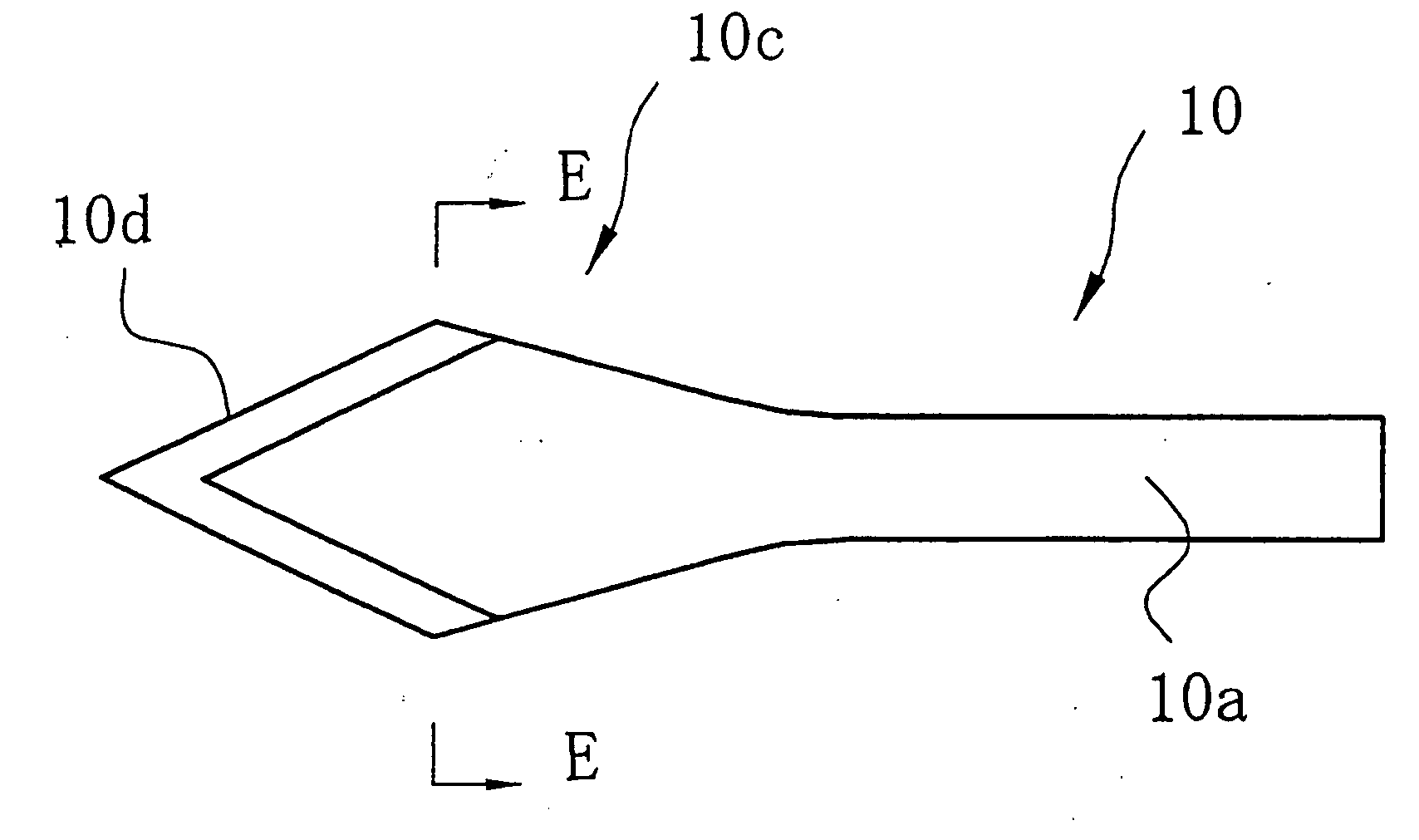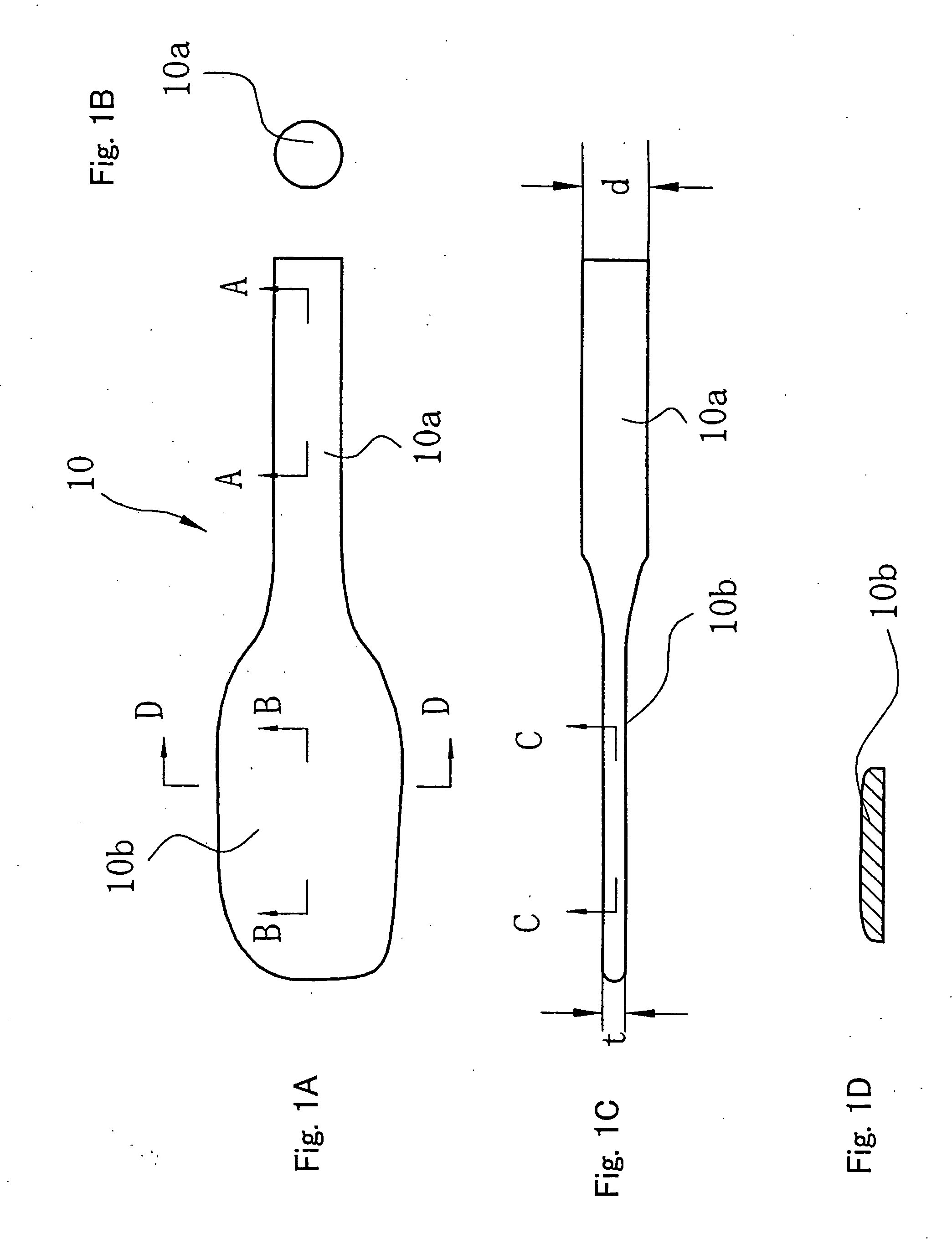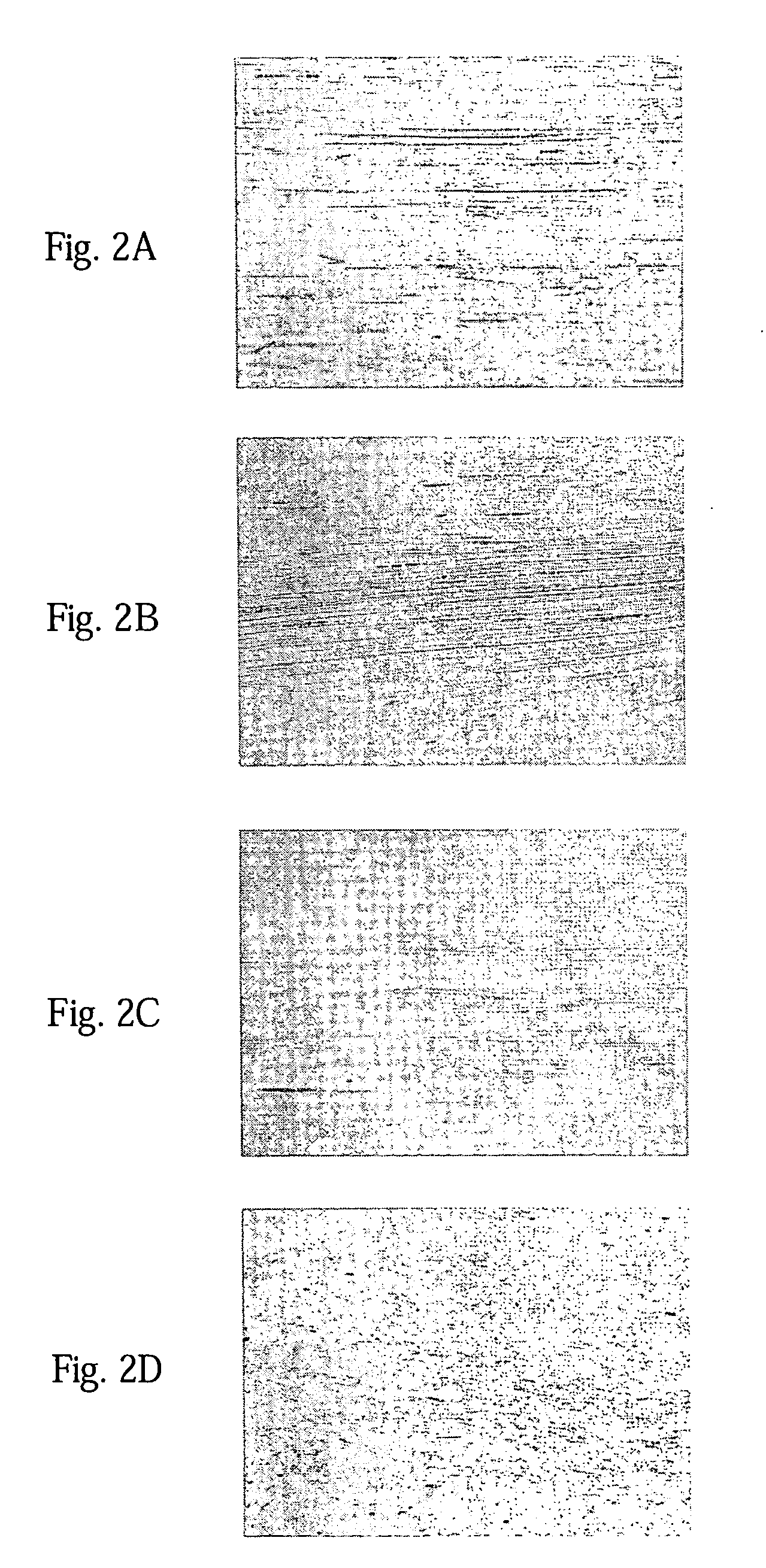Medical knife
- Summary
- Abstract
- Description
- Claims
- Application Information
AI Technical Summary
Benefits of technology
Problems solved by technology
Method used
Image
Examples
Embodiment Construction
[0032] An embodiment according to the present invention is described forthwith with reference to attached drawings.
[0033] Austenitic stainless steel SUS302 (carbon content: 0.15% or less) is used as the material for a medical knife according to the present invention. This type-B stainless steel SUS302 for springs or SUS304 having less carbon content may be used. The carbon content included in the SUS304 is 0.08% or less. However, since the carbon content greatly influences work hardening, the carbon content of the SUS304 is considered to be the lower limit, namely, approximately 0.08% to 0.15%.
[0034] Once a wire rod of SUS302 6 to 10 mm in diameter is subjected to solution heat treatment, the resulting wire rod is wire-drawn into 5 to 8 mm in diameter (reduction ratio is approximately 60%). This is subjected to solution heat treatment again, then wire-drawn into 2 to 3 mm in diameter (reduction ratio is approximately 60%). This is further subjected to solution heat treatment again...
PUM
| Property | Measurement | Unit |
|---|---|---|
| Fraction | aaaaa | aaaaa |
| Fraction | aaaaa | aaaaa |
| Fraction | aaaaa | aaaaa |
Abstract
Description
Claims
Application Information
 Login to View More
Login to View More - R&D
- Intellectual Property
- Life Sciences
- Materials
- Tech Scout
- Unparalleled Data Quality
- Higher Quality Content
- 60% Fewer Hallucinations
Browse by: Latest US Patents, China's latest patents, Technical Efficacy Thesaurus, Application Domain, Technology Topic, Popular Technical Reports.
© 2025 PatSnap. All rights reserved.Legal|Privacy policy|Modern Slavery Act Transparency Statement|Sitemap|About US| Contact US: help@patsnap.com



